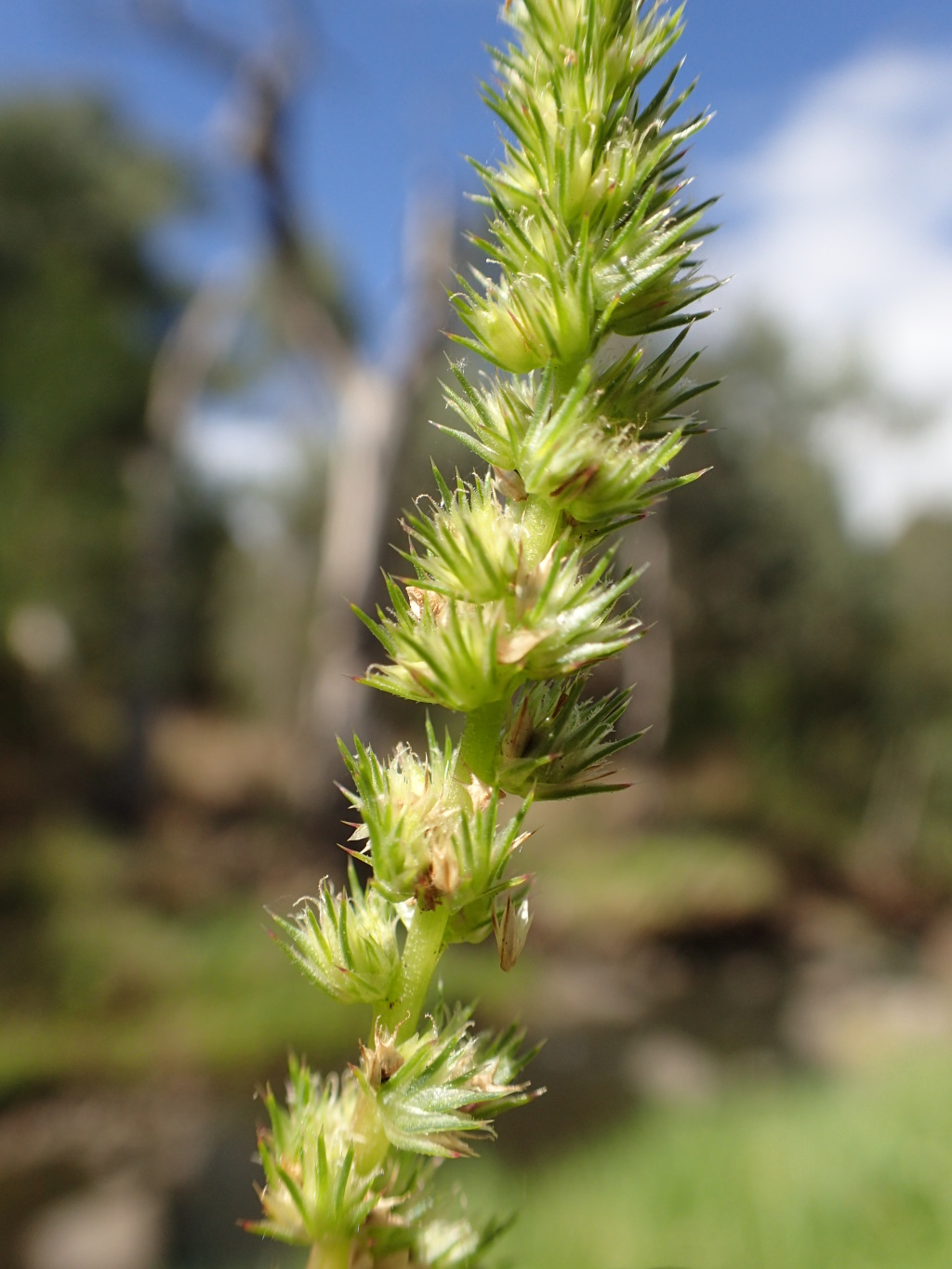Amaranthus retroflexus
L. Redroot AmaranthErect annual to c. 1.2 m high. Stems angled or grooved, glandular pubescent, sometimes reddish. Roots reddish. Leaves long-petiolate, ovate to rhombic, lamina 2–14 cm long, 1–8 cm wide; margin often crenulate and/or undulate; apex sometimes shortly mucronate. Spikes dense, crowded toward the ends of branches and in upper axils, to c. 10 cm long, 1–2 cm diam., greenish or reddish. Flowers unisexual; longest bracts and bracteoles lanceolate, 3–5 mm long, spinescent; tepals 5, oblong, 1.5–3 mm long, obtuse, truncate or emarginate, often shortly mucronate; stamens 5. Utricle circumsciss, subequal to perianth; seed discoid, brown, shiny, 1–1.5 mm diam. Flowers Feb.–May.
MuM, Wim, VVP, VRiv, MuF, GipP, WaP, Gold, CVU, NIS, HSF. Also naturalised WA, NT, SA, Qld, NSW, ACT. Native to North America. Occasional weed of paddocks, gardens and disturbed open ground, mostly near cities (e.g. Horsham, Ballarat, Melbourne, Shepparton areas).
Walsh, N.G. (1996). Amaranthaceae. In: Walsh, N.G.; Entwisle, T.J., Flora of Victoria Vol. 3, Dicotyledons Winteraceae to Myrtaceae, pp. 199–215. Inkata Press, Melbourne.
 Spinning
Spinning



